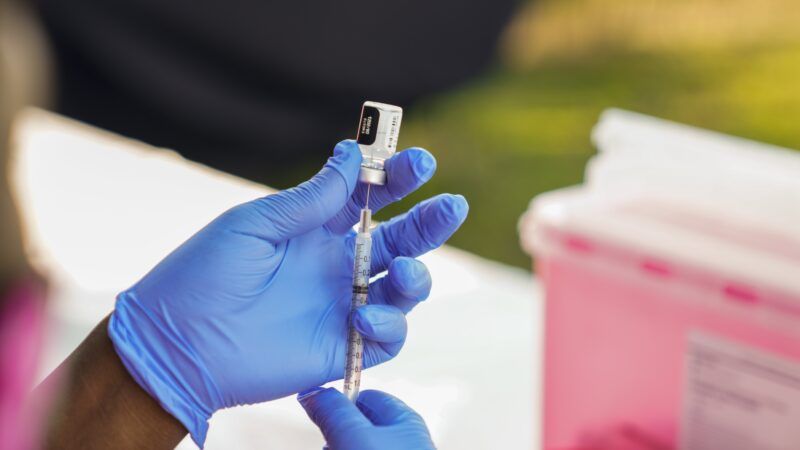The Racial Gap Among the Vaccinated Has Essentially Disappeared
While the president insists on a top-down mandate, individuals making their own choices are achieving vaccination goals.

Amid ongoing debates over the efficacy and propriety of COVID-19 vaccinations being mandated by certain industries—or if the Biden administration gets its way, being mandated for nearly all industries—here is a bit of good news: The long-feared racial gap in vaccinations seems to have disappeared.
According to a new survey from the Kaiser Family Foundation, as the rate of U.S. adults who report having received at least one dose of the COVID-19 vaccines continues to climb, the rates among racial groups are now basically identical, comprising 71 percent of white adults, 70 percent of black adults, and 73 percent of Hispanic adults. President Joe Biden's proposed mandate for all private-sector employees to be vaccinated has yet to take effect, so this is a good sign for the efficacy of general persuasion over a top-down mandate.
Ever since the initial rollout of the COVID-19 vaccines, media outlets and medical officials have speculated about the general trend among African Americans toward vaccine hesitance. There is indeed a historical mistrust of the medical establishment among African Americans, much of it rooted in historical experience. Most infamous is the Tuskegee syphilis study, in which 400 black men in Alabama who suffered from syphilis were instead promised treatment for "bad blood"; researchers gave them placebos and simply charted the disease's unchecked progress for 40 years.
While it probably wasn't the primary reason for vaccine hesitance, the Tuskegee study did take up a lot of mindspace when the shots were first rolled out. After the Food and Drug Administration granted the Pfizer/BioNTech vaccine an Emergency Use Authorization in December, interest in the topic on Google suddenly spiked. Much of the Biden administration's early vaccination focus was on outreach to Americans of color, though data suggested that Republicans considered themselves even less likely to receive the vaccine.
But now, less than a year into the vaccine rollout and within the first six months of the shots' widespread availability, vaccine hesitancy along racial lines has completely evened out. The New York Times credits local efforts to remove individual barriers, such as offering transportation to and from vaccination sites, door-to-door canvassers who can answer people's concerns about the shot's safety or efficacy, and even public health campaigns that contrasted the vaccine's development with the Tuskegee study.
Of course, there are a multitude of reasons why people are hesitant of the vaccines, and therefore any number of reasons why someone might ultimately choose to take them: the Times article also mentions private employer mandates, the threat of the delta variant, and the Food and Drug Administration's eventual full approval of the vaccines. But most of these methods involve persuasion, not federal mandates. There's a lesson there.


Show Comments (56)